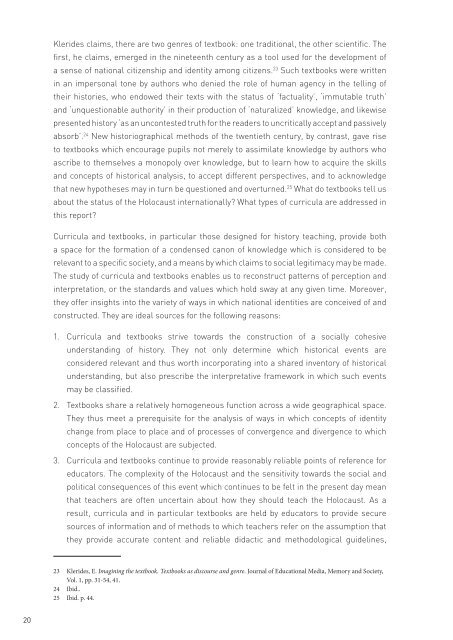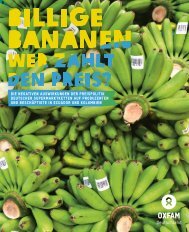228776e
228776e
228776e
You also want an ePaper? Increase the reach of your titles
YUMPU automatically turns print PDFs into web optimized ePapers that Google loves.
Klerides claims, there are two genres of textbook: one traditional, the other scientific. The<br />
first, he claims, emerged in the nineteenth century as a tool used for the development of<br />
a sense of national citizenship and identity among citizens. 23 Such textbooks were written<br />
in an impersonal tone by authors who denied the role of human agency in the telling of<br />
their histories, who endowed their texts with the status of ‘factuality’, ‘immutable truth’<br />
and ‘unquestionable authority’ in their production of ‘naturalized’ knowledge, and likewise<br />
presented history ‘as an uncontested truth for the readers to uncritically accept and passively<br />
absorb’. 24 New historiographical methods of the twentieth century, by contrast, gave rise<br />
to textbooks which encourage pupils not merely to assimilate knowledge by authors who<br />
ascribe to themselves a monopoly over knowledge, but to learn how to acquire the skills<br />
and concepts of historical analysis, to accept different perspectives, and to acknowledge<br />
that new hypotheses may in turn be questioned and overturned. 25 What do textbooks tell us<br />
about the status of the Holocaust internationally What types of curricula are addressed in<br />
this report<br />
Curricula and textbooks, in particular those designed for history teaching, provide both<br />
a space for the formation of a condensed canon of knowledge which is considered to be<br />
relevant to a specific society, and a means by which claims to social legitimacy may be made.<br />
The study of curricula and textbooks enables us to reconstruct patterns of perception and<br />
interpretation, or the standards and values which hold sway at any given time. Moreover,<br />
they offer insights into the variety of ways in which national identities are conceived of and<br />
constructed. They are ideal sources for the following reasons:<br />
1. Curricula and textbooks strive towards the construction of a socially cohesive<br />
understanding of history. They not only determine which historical events are<br />
considered relevant and thus worth incorporating into a shared inventory of historical<br />
understanding, but also prescribe the interpretative framework in which such events<br />
may be classified.<br />
2. Textbooks share a relatively homogeneous function across a wide geographical space.<br />
They thus meet a prerequisite for the analysis of ways in which concepts of identity<br />
change from place to place and of processes of convergence and divergence to which<br />
concepts of the Holocaust are subjected.<br />
3. Curricula and textbooks continue to provide reasonably reliable points of reference for<br />
educators. The complexity of the Holocaust and the sensitivity towards the social and<br />
political consequences of this event which continues to be felt in the present day mean<br />
that teachers are often uncertain about how they should teach the Holocaust. As a<br />
result, curricula and in particular textbooks are held by educators to provide secure<br />
sources of information and of methods to which teachers refer on the assumption that<br />
they provide accurate content and reliable didactic and methodological guidelines,<br />
23 Klerides, E. Imagining the textbook. Textbooks as discourse and genre. Journal of Educational Media, Memory and Society,<br />
Vol. 1, pp. 31-54, 41.<br />
24 Ibid..<br />
25 Ibid. p. 44.<br />
20




